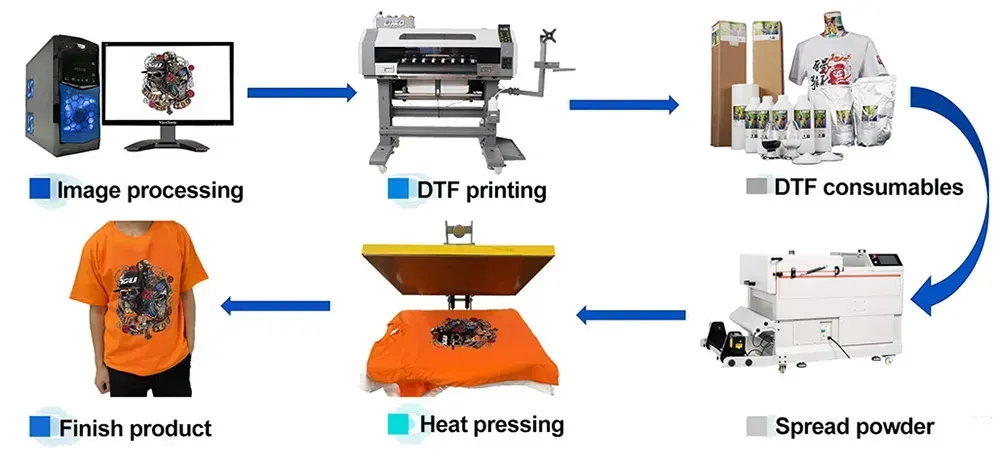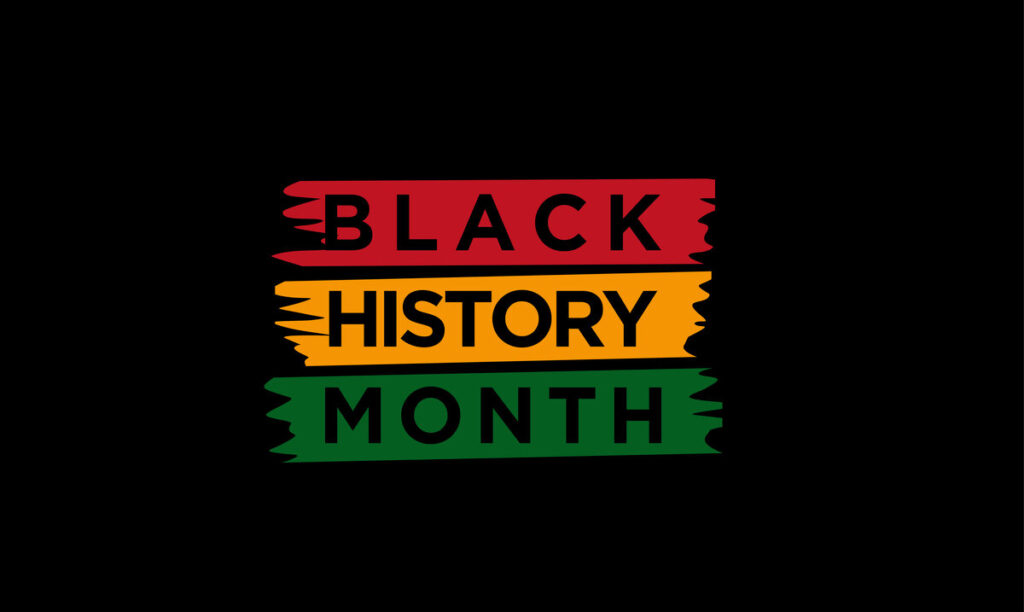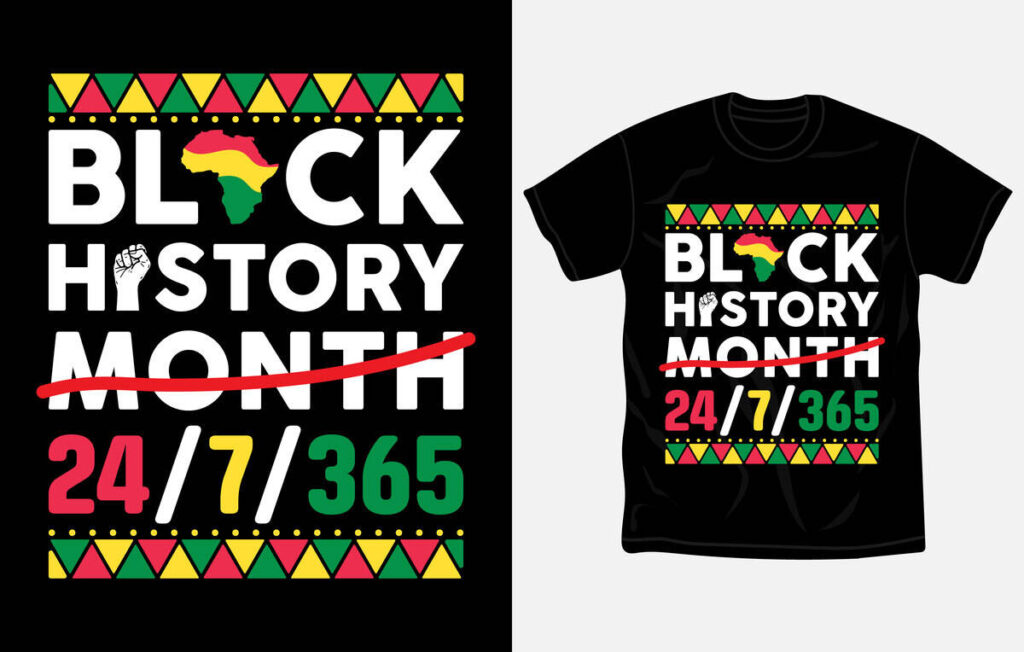The DTF printing process, short for Direct-to-Film printing, has revolutionized the world of custom apparel printing by combining innovation with efficiency. This advanced textile printing technology enables the transfer of vibrant designs onto a variety of substrates, particularly fabrics, ensuring high-quality results. DTF printing stands out for its ability to produce intricate details and stunning colors with minimal setup time, making it a go-to choice for businesses in need of reliable printing solutions. Over the years, advancements in DTF printing have further enhanced its capabilities, making it more accessible and effective for printers worldwide. In this article, we will delve into the step-by-step insights of the DTF printing process, exploring how it has reshaped the landscape of textile printing.
In the realm of modern printing techniques, Direct-to-Film (DTF) printing represents a cutting-edge solution that has captured the attention of the textile industry. This method allows for the seamless application of detailed imagery onto various materials, particularly in the realm of custom apparel. Often described as a transformative approach within the field of digital printing technology, DTF printing has gained prominence due to its efficiency and high-quality outputs. The procedural steps involved in DTF printing ensure that each design is executed with precision, making it an attractive option for businesses seeking top-notch results. With ongoing advancements in DTF technology, this innovative printing method is poised to set new standards in the world of custom apparel and beyond.
Understanding DTF Printing Technology
Direct-to-Film (DTF) printing has garnered significant attention due to its innovative approach to fabric printing. This technology offers an alternative to traditional methods such as screen printing or direct-to-garment (DTG) printing by providing a more efficient means of applying designs to textiles. DTF print technology involves a unique combination of digital printing and heat transfer techniques, which results in vibrant images that can withstand the rigors of daily use. Users can leverage this technology to produce eye-catching designs that are both durable and visually appealing.
The intricate process of DTF printing not only allows for high-quality outputs but also caters to various fabric types. From cotton to polyester, DTF printing excels in versatility, making it a favored choice among custom apparel producers. The integration of water-based inks further emphasizes its eco-friendly nature, aligning with the growing demand for sustainable printing solutions in the textile industry.
Step-by-Step Guide to DTF Printing Steps
To fully grasp the efficacy of DTF printing, it’s vital to understand its step-by-step process. The first stage begins with the design creation, where graphic designers utilize software tools to create visuals that incorporate precise color specifications and resolutions suited for DTF standards. This foundational stage sets the stage for achieving stunning outcomes, and attention to detail here cannot be overlooked.
Following design creation, the next crucial step is film printing, where the prepared graphic is printed onto a special PET film. The unique properties of this film ensure maximum adherence for the inks used in DTF, resulting in a smooth transition during the application to fabric. Moreover, applying adhesive powder after printing is an integral step that guarantees the ink remains attached throughout the curing and transfer phases, which are essential for achieving durable prints.
Key Benefits of DTF Printing for Custom Apparel
The advantages of DTF printing for custom apparel are manifold. Firstly, it provides unmatched versatility, enabling designers to produce intricate designs that can cater to different textile substrates. This adaptability means businesses can easily meet diverse customer demands without the limitations typically associated with other printing methods.
Additionally, DTF printing is known for its efficiency and cost-effectiveness. The process minimizes setup time and waste, allowing companies to scale their production without incurring significant costs. As a result, many custom apparel brands are turning to DTF technology to fulfill their printing needs more effectively, ensuring quicker turnaround times and higher customer satisfaction.
Innovations and Advancements in DTF Printing
The DTF printing landscape is rapidly evolving, with numerous advancements improving overall print quality. Recent innovations have led to the development of advanced adhesive powders and films that enhance print durability and adhesive strength. These improvements increase the longevity of prints while reducing the likelihood of peeling or fading, which are common issues in textile printing.
Moreover, as manufacturers continue engineering better printing equipment, businesses are now benefiting from printers that can handle larger volumes while maintaining high standards. These innovations not only drive productivity but also ensure that the color accuracy and detail required for custom projects are consistently achieved, making DTF printing an increasingly viable option in the market.
Environmental Impact of DTF Printing
In an era where sustainability is paramount, DTF printing has emerged as an environmentally friendly alternative in the textile printing sector. Utilizing water-based inks and eco-conscious materials for films and adhesives helps reduce harmful emissions associated with traditional printing methods. As consumers become increasingly aware of the environmental impact of their purchases, businesses that leverage DTF technology positioned themselves advantageously in a competitive marketplace.
Additionally, the efficiency of the DTF printing process reduces waste generation, a key factor for eco-conscious brands looking to minimize their footprint. By adopting techniques that favor sustainability, companies can appeal to a growing demographic that prioritizes ethical production practices, thus enhancing their brand image and fostering customer loyalty.
The Future of DTF Printing and Custom Merchandise
Looking ahead, the DTF printing process is set to dominate the custom merchandise market. As consumer demand for unique, high-quality apparel rises, businesses that invest in advancements in DTF technology will find themselves at the forefront of this booming industry. Therefore, staying up to date with the latest trends and innovations in DTF printing will be vital for success in the competitive landscape.
Furthermore, the adaptability of DTF printing means that it will continue to evolve, finding applications beyond apparel into various sectors, including promotional items, home décor, and more. This limitless potential positions DTF printing not just as a passing trend but as a lasting mainstay in the printing technology landscape, ensuring its relevance in the years to come.
Frequently Asked Questions
What is DTF printing and how does it work?
DTF printing, or Direct-to-Film printing, is a method that transfers vibrant images from specially coated films onto fabrics using water-based inks. The process involves creating a digital design, printing it on PET film, applying adhesive powder, curing, and then heat-pressing to ensure the design adheres to the fabric.
What are the main steps involved in the DTF printing process?
The DTF printing process consists of several key steps: 1) Design Creation, 2) Film Printing, 3) Powder Application, 4) Curing, 5) Transfer to substrate, 6) Peeling off the film, and 7) Finishing touches to enhance durability and appearance.
How does DTF printing compare to traditional textile printing methods?
DTF printing is more versatile than traditional methods, as it allows for vibrant colors and intricate designs with minimal setup time. Unlike traditional printing that often requires extensive prep work, DTF printing simplifies the process by using water-based inks and a straightforward transfer method.
What advancements are being made in DTF printing technology?
Recent advancements in DTF printing technology include innovations in eco-friendly materials, improved film and adhesive types for better wash durability, and enhanced printer technology for larger formats and customizability. These improvements facilitate greater quality and efficiency in custom apparel printing.
Is DTF printing eco-friendly compared to other printing processes?
Yes, DTF printing is considered more eco-friendly because it uses water-based inks and incorporates environmentally sustainable materials in both film and adhesives. This reduces the environmental impact commonly associated with many traditional textile printing processes.
What types of fabrics can be printed using the DTF printing process?
DTF printing is versatile and can be used on a wide range of fabrics, including cotton, polyester, blends, and more. This adaptability makes it an excellent choice for custom apparel printing, catering to various needs and preferences in the textile industry.
| Step | Description |
|---|---|
| 1. Design Creation | Crafting a digital design using software like Adobe Illustrator that meets DTF specifications. |
| 2. Film Printing | Printing the design onto a PET film using water-based inks and specialized printers. |
| 3. Powder Application | Applying adhesive powder to the wet ink, which helps secure the print to the substrate. |
| 4. Curing | Curing the film with heat to bond the adhesive to the ink for durability. |
| 5. Transfer | Using a heat press to transfer the print from the film to the chosen fabric. |
| 6. Peeling | Carefully peeling the film to reveal the printed design on the substrate. |
| 7. Finishing | Applying protective coatings or heat treatments for durability and appeal. |
Summary
The DTF printing process is an innovative method that revolutionizes how designs are applied to textiles. This highly efficient printing technique involves several precise steps—from creating a digital design to the final transfer and finishing touches—that ensure high-quality outputs. As the DTF printing process evolves with technological advancements and material improvements, it offers exceptional versatility and quality for custom apparel and other fabric applications. Understanding this process allows businesses to tap into its potential, meeting the increasing demand for custom prints and maintaining competitiveness in the textile industry.



